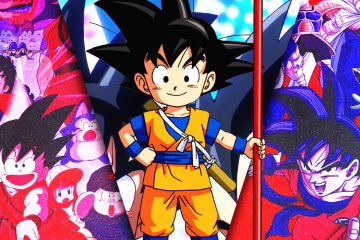The world of Japanese manga and anime is known for a variety of tropes and conventions, some of them more time-honored and practical than others. One of the most enduring tropes in the manga/anime industry is the use of time skips, and some series are famous for using them. A memorable, meaningful time skip can become the highlight of an entire series and generate even more buzz and excitement, most often in shonen anime.A time skip may serve a few essential purposes in an anime series of any length, and in certain genres, fans might even expect and hope for a time skip. Of course, time skips are not unique to anime, since Western TV shows and movies also use them for similar purposes. Still, in the context of Japanese anime, time skips feel less like an ordinary narrative tool and more like a beloved, familiar trope that makes anime feel more anime. Amusingly, that may say a lot about how trope-oriented the anime industry is, including with time skips.Using a time skip like that can create a firm, clear dividing line between arcs, a move that is best used sparingly. This works well for the most dramatic, important, and impactful story arc transitions. Fans might even call a time skip a super arc transition, far more than just “the next week…” or anything like that. If something is happening three years later, for example, it’s obvious something incredibly important is happening to the overall narrative.
The world of Japanese manga and anime is known for a variety of tropes and conventions, some of them more time-honored and practical than others. One of the most enduring tropes in the manga/anime industry is the use of time skips, and some series are famous for using them. A memorable, meaningful time skip can become the highlight of an entire series and generate even more buzz and excitement, most often in shonen anime.
A time skip may serve a few essential purposes in an anime series of any length, and in certain genres, fans might even expect and hope for a time skip. Of course, time skips are not unique to anime, since Western TV shows and movies also use them for similar purposes. Still, in the context of Japanese anime, time skips feel less like an ordinary narrative tool and more like a beloved, familiar trope that makes anime feel more anime. Amusingly, that may say a lot about how trope-oriented the anime industry is, including with time skips.
Using a time skip like that can create a firm, clear dividing line between arcs, a move that is best used sparingly. This works well for the most dramatic, important, and impactful story arc transitions. Fans might even call a time skip a super arc transition, far more than just “the next week…” or anything like that. If something is happening three years later, for example, it’s obvious something incredibly important is happening to the overall narrative.
#Anime #Manga #Time #Skips
Note:- (Not all news on the site expresses the point of view of the site, but we transmit this news automatically and translate it through programmatic technology on the site and not from a human editor. The content is auto-generated from a syndicated feed.))



